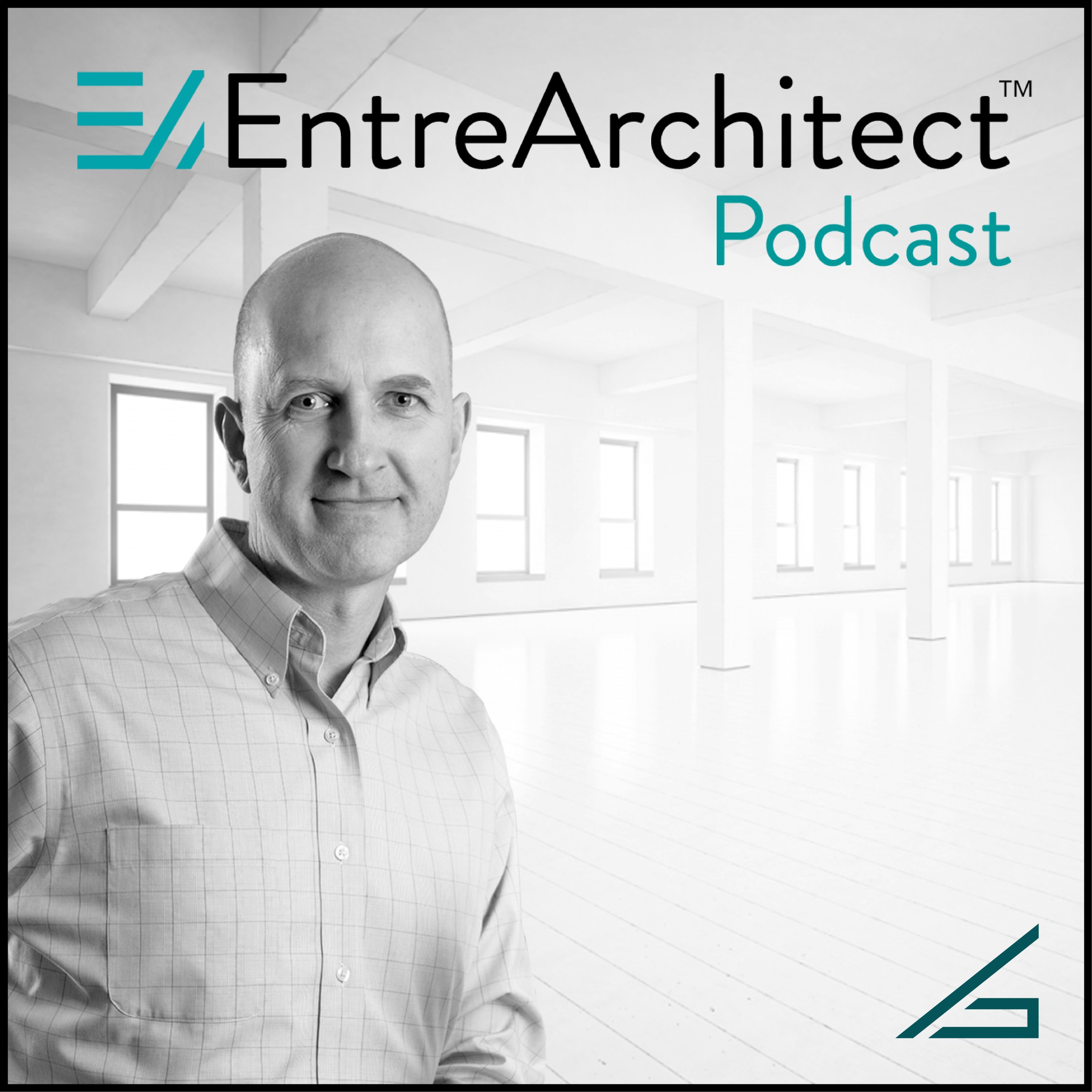
 Questions from the EntreArchitect Community
Questions from the EntreArchitect Community
As an active community of entrepreneur architects, we’ve come together to build better businesses. We’re working together to build a better profession. Every day, we see the willingness to share our collective knowledge every day on the EntreArchitect Facebook Group. Members are sharing their struggles and not only are they benefiting as individuals, but each business is growing stronger every day.
This week at EntreArchitect Podcast, Mark R. LePage answers Questions from the EntreArchitect Community.
For initial client meetings on a domestic project, do you let the client take the lead with their requirements/ideas/tour of the house while drinking coffee or do you take control with a meeting agenda?
While everyone does their own thing, and you kind of have to figure out what works best for you. Here’s how Mark typically does things:
The initial meeting process starts with a telephone call to manage the client’s expectations. Use a form to make sure you’re asking the same questions every time. The more information you collect upfront, the better. Take all the information you have and qualify the client to ensure you’re not wasting your time with a project you don’t really want or by throwing away valuable time in your day.
After confirming that they’re the right fit, set expectations for your meeting including time limits, steps you’re planning to take, and what will happen after the meeting. Let your clients feel more comfortable with you in the lead since they don’t know what to expect. Let them know you want to go on a tour right away and allow them to talk; what can they tell you about what they like or don’t like about the house? Will they receive a proposal or follow up prior to the initial meeting with you?
I was inspired to make the switch from CAD to BIM, so despite a busy schedule, I immersed myself in tutorials from Lynda.com. I’ve done lots of learning, but I’m feeling overwhelmed by the depths of this program. I’m trying to take the advice to just go forward and not switch back and forth, but I am so nervous. I feel like I’ve overloaded myself with information that I won’t remember. I’m a one-woman show who works from home doing residential/condo work while raising children. Does anyone else have this anxiety about switching over?
As a small firm, Mark knows how it feels to work hard from home while raising a family. It’s painful to make the transition from CAD to BIM, you’re certainly not alone there. So far, Mark has reviewed the options and narrowed it down to Revit and ArchiCad. Now, the goal is to design a floor plan in 3D and see which program works best for him. Once you get into it, you will hopefully know which one works best for you.
To be totally transparent, Mark had to switch back to AutoCad at one point to adhere to a deadline. However, the plan is to move onto the next phase in ArchiCad. It’s okay to switch over if you need to, but don’t abandon the commitment.
It’s taken a tremendous amount of time to learn and get set up, but not as much time as it took him to decide to make the transition. The biggest fear is exactly what happened: there’s so much going on and it’s not necessarily a need to make the switch, but Mark wants to keep up with new software and be proficient in it. With perseverance, soon enough, BIM will be second nature.
My practice has gotten a lot busier lately, and, so far, I’m keeping the panic at bay. I’m noticing that carving out “maker’s time” is getting more difficult. Any suggestions?
We’re all struggling with productivity, getting things done and focusing on the things that matter the most. Her’s a few resources that may help you:
- Follow Eric Reinholdt’s 30X40 Design Workshop, find him on Twitter and Facebook, and check out the 30X40 Design Workshop on YouTube
- GetFocusedCourse.com is everything Mark know’s about productivity from Monday morning meetings to how he gets things done.
- Eliminate, automate and delegate. Check out Rory Vaden’s Focus Funnel to find out how can you create more time in the future by taking care of the most important things today?
After being promoted to the Director of Architecture, myself and another architect here will be doing all the marketing and business development moving forward. I don’t have as much business development experience as I’d like, what are some avenues we should take to grow our firms and departments? How can we make connections and get work through the door?
Your website needs to change from a portfolio to a marketing tool that tells your firm’s unique story. It should be clear and easy to read, and should include a call to action for potential clients to take the next step.
Figure out your target market and learn everything you can about that market: Who are they? Where do they work/play/live? Become an expert. Then, go to those places online or in person and build your network.
Our Facebook group is active with architects throughout the world. Everyone can share successes and failures in an open, transparent forum that’s private for only those who are in the group. It’s free to join, but you must be an architecture student or architect of any type and any size firm.
Head over to the EntreArchitect Facebook Group and share your thoughts.
Visit our Platform Sponsors
NCARB is helping architects reach their goals! Get back on track with the new AXP (Architectural Experience Program) Portfolio by submitting an online portfolio and meeting your state’s requirements to get one step closer to becoming an architect! Visit NCARB.org to learn more today.
TruStile is a leader in high end, architectural interior doors that never fail to perform. They’re passionate about providing inspiration and tools to transform your designs with the most authentic and distinctive doors available. Visit them at TruStile.com to learn more!
Freshbooks is the easy way to send invoices, manage expenses, and track your time. Learn more at FreshBooks.com.
Access Your 30-Day Free Trial at FreshBooks.com/architect (Enter EntreArchitect)
Referenced in this Episode
EntreArchitect Profit for Small Firm Architects course (free)
Photo credit: Pixabay // PIX1861
